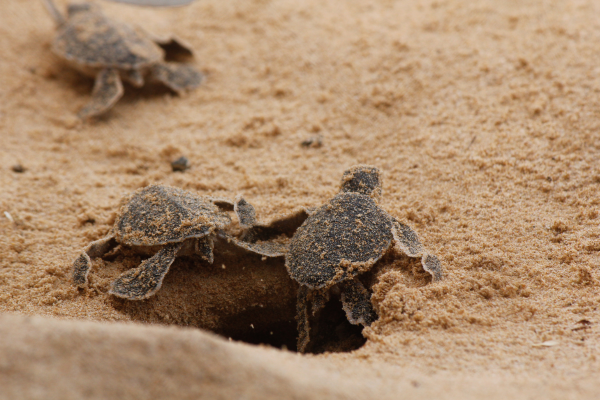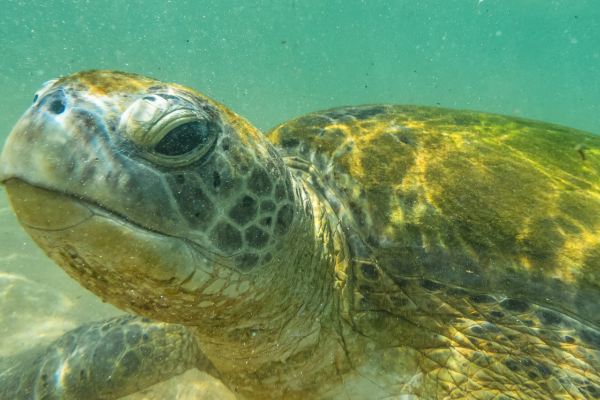Sea Turtle Nesting Season in Sri Lanka: A Natural Spectacle – By Bhanuka – eLanka

The shores of Sri Lanka come alive during the sea turtle nesting season, a mesmerizing natural spectacle that draws travelers and conservation enthusiasts alike. This annual phenomenon is a testament to the remarkable life cycle of these ancient mariners, and Sri Lanka’s beaches play a crucial role in the survival of several species. In this exploration, we delve into the magic of the sea turtle nesting season in Sri Lanka.
The Timing of the Season: Sea turtle nesting season in Sri Lanka typically occurs between the months of October and April, with slight variations depending on the specific species. During this period, female sea turtles make their way to the sandy shores under the cover of darkness to lay their eggs, creating a breathtaking spectacle for those fortunate enough to witness it.

The Main Species: Sri Lanka is home to five species of sea turtles, each with its own nesting habits. The Olive Ridley, Green, Loggerhead, Leatherback, and Hawksbill turtles grace the shores of the island during the nesting season. These majestic creatures have been returning to Sri Lanka’s beaches for centuries, contributing to the delicate balance of the marine ecosystem.
Choosing the Right Beaches: While sea turtles may nest on various beaches around Sri Lanka, certain locations are particularly renowned for this natural event. Rekawa Beach, Kosgoda, and Panama Beach are among the well-known nesting sites, attracting conservationists, researchers, and eco-tourists eager to witness this awe-inspiring spectacle.
The Nesting Process: The sea turtle nesting process is a meticulously choreographed dance of nature. Under the cloak of darkness, female turtles emerge from the ocean, carefully choosing a suitable spot on the beach to dig a nest. Once the hole is dug, the eggs are laid, and the nest is covered with sand. The female then returns to the sea, leaving the eggs to incubate.
Conservation Efforts: Sea turtle conservation is a priority in Sri Lanka, particularly during the nesting season. Conservationists and local communities collaborate to protect nesting sites, implement measures to minimize disturbances, and raise awareness about the importance of preserving these habitats. Turtle hatcheries play a vital role in ensuring the survival of sea turtle hatchlings, providing a safe environment for their initial stages of life.
Responsible Tourism: For those fortunate enough to witness the sea turtle nesting season, responsible tourism is essential. Visitors are urged to maintain a respectful distance, avoid using flash photography, and refrain from any actions that could disturb the nesting process. By embracing responsible tourism practices, visitors contribute to the well-being and conservation of these incredible creatures.
Conclusion: The sea turtle nesting season in Sri Lanka is not merely a natural event; it is a testament to the delicate interplay between these ancient mariners and their coastal habitats. As the beaches come alive with the rhythm of nature, witnessing a sea turtle nesting is an experience that leaves an indelible mark on those fortunate enough to witness it. Through conservation efforts and responsible tourism, Sri Lanka continues to be a guardian of these magnificent creatures, ensuring that future generations can marvel at the beauty of the sea turtle nesting season.







